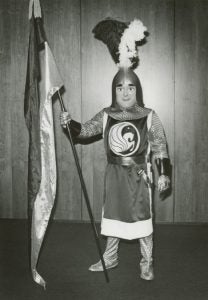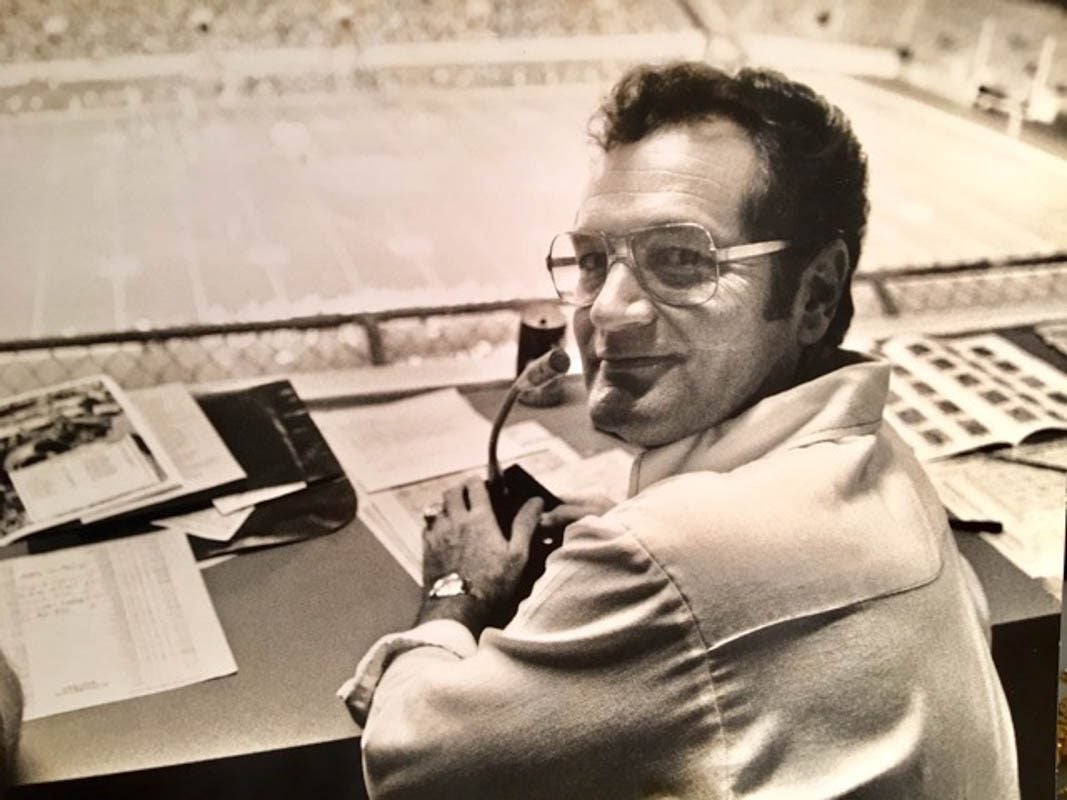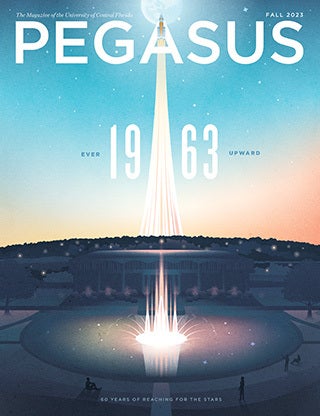I have been flooded with fond memories while watching the UCF football team become an NCAA powerhouse the past two seasons.
As a professor emeritus of communication, I announced the games for the first five years of UCF football starting in 1979.
Announcing over the Tangerine Bowl (now Camping World Stadium) public-address system at that time was rather challenging. I often enlisted my children to help as spotters to identify players, and it took getting used to hearing your voice on a five-second delay. It was so distracting you had to concentrate on what you were saying and not on what you were hearing. On one occasion, I announced that the football was “placed on the 51-yard line.” I got a few stares from fans wondering just where the 51-yard line might be.
Launching New Traditions, Mascots and Half-time Performances
I was also asked to arrange for the pregame and halftime shows for home games. The assignment was exciting, rewarding and very comical at times because we were taking baby steps.
That first year I pleaded with every high school band director in the area to participate. When options were sparse, I even enlisted a security-dog demonstration from Patrick Air Force Base.
When we staged our first home football game against Fort Benning, there was no marching band, no salary for our coach, and just a few brave cheerleaders.
That first year I pleaded with every high school band director in the area to participate. When options were sparse, I even enlisted a security-dog demonstration from Patrick Air Force Base.
My directions for this task came from the athletic director Jack O’Leary under the watchful eye of then President Trevor Colbourn, the driving force behind the UCF football program.
Of course, Colbourn had to take the cautious, administrative view that probably included avoiding risks of liability, which meant turning down the halftime plan for a Cypress Gardens ski-show performer to sail around the stadium.

Probably the most awkward situation occurred when we were playing Morehouse College, whose marching band was going to be at the game but not scheduled to perform at halftime. We planned for our own jam-packed halftime, which was to conclude with words by Colbourn. Before the halftime began, I was surprised to see the Morehouse band forming on the sidelines and then begin to move onto the field. Our staff was doing everything it could to stop them, to no avail.
It turned into a chaotic mess. After the band performed and left the field, we had little time left for UCF to do much of anything. Our part of the halftime program was a disaster. There was just a little time for Colbourn’s remarks, and a delay of game penalty was imposed on UCF at the start of the second half.
The folks at Disney were more than willing to help with the UCF football program in a number of ways. They even offered to construct a new UCF mascot suit for our 1980 football season. Our ideas were very knightly, so I recommended “Sir-Wins-A-Lot” for the mascot, and the name stuck — at least for a time. Colbourn even knighted our new mascot as Sir-Wins-A-Lot before a home game.
The title worked well for a few games, up until we ran into a few losses. Later on, having a mascot named Knightro served us better.
An FSU Connection
In 1982, former FSU Coach Bill Peterson arrived to be the new athletic director. Working with Peterson was quite a kick for me. As an FSU alumnus, I knew all about his igniting the Seminoles into a major football powerhouse and the part he played in nurturing FSU’s traditions.
There were a number of aspects of UCF’s early football launch that included assistance from those Seminoles from Florida State. Despite the fact that they beat the Knights 46-14 in our one 1995 meeting on the gridiron, their influence on our football program was noteworthy. Two of our early athletic directors had been FSU coaches, with Gene McDowell being the first All-American player at FSU.
The late actor Burt Reynolds, a former running back for the Seminoles, also gave an assist to the rising UCF Knights football program. I was honored to serve as master of ceremonies for one of the annual “Night of Knights” fund-raising auctions in downtown Orlando in 1989. It was a lavish, black-tie, televised affair attended by a host of community notables. It also became a key event in the history of the football program as we collected more than $300,000 for UCF sports that evening.
Building a solid football program takes time, commitment and some very careful, right steps.
The program was all about convincing the UCF community of the importance of football to the development of our school at large, a concept championed by Colbourn. In my opening remarks I played a portion of the Notre Dame fight song. The audience recognized it immediately — and that was my point. It was familiar to them because a school then of only 9,000 had achieved worldwide recognition through its extraordinary profile in the sport of football.
Adding glitter to that big night was an appearance by Reynolds and wife Loni Anderson (whose son-in-law was a UCF assistant football coach at the time). The couple added a donation: a black stallion to carry our Knight mascot.
Building a solid football program takes time, commitment and some very careful, right steps. Above all, it takes a lot of dedicated, unselfish, optimistic people who can give the fans something of value to watch. As a witness during those early formative years, I think we saw just that.
We owe so much to those many supporters who have encouraged the program with their ideas, their participation and their pocketbooks.





